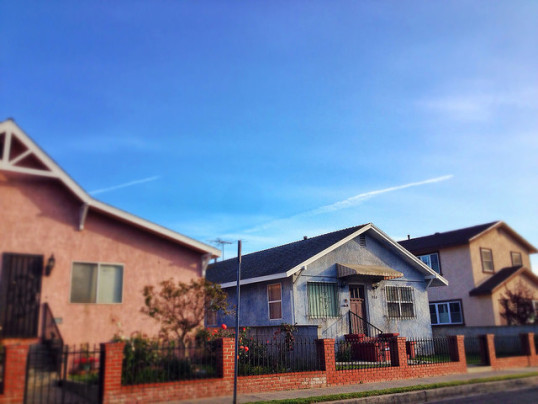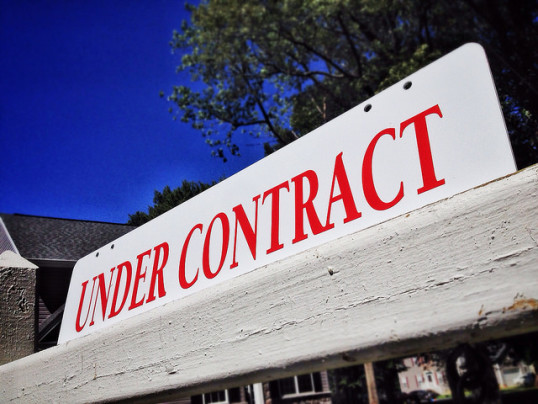According to the National Association of Home Builders, 63 of the approximately 350 metro areas across the country returned to or exceeded normal levels of economic and housing activity during the fourth quarter of 2014. The gains, which include year-over-year improvement in 69 percent of local real-estate markets, are measured based on current home price, building permit, and employment data. Tom Woods, NAHB’s chairman, said markets are improving at a consistent pace. “A growing economy and rising consumer confidence should help drive the release of pent-up demand in 2015,” Woods said. Nationwide, the housing market is now 90 percent back to normal, with markets in Louisiana, California, South Carolina, Texas, and Tennessee making up the list of top performing markets. Among the categories the NAHB tracks, employment leads the way, with 23 metropolitan areas rising above previous norms over the last year. Permits to build single-family homes, on the other hand, still lag behind other indicators. In fact, building permits are just 44 percent back to normal nationwide. More here.
Archive for February 2015
Mortgage Rates Fall To 19-Month Low
Mortgage rates fell last week and are now at their lowest level since May 2013, according to the Mortgage Bankers Association’s Weekly Applications Survey. The MBA’s survey, conducted weekly since 1990, found rates down across all loan categories, including 30-year fixed-rate loans with both conforming and jumbo balances, mortgages backed by the Federal Housing Administration, and 15-year fixed-rate loans. In response to favorable rates, demand for mortgage applications rose. In fact, the MBA’s Market Composite Index – which measures both refinance and purchase demand – was up 1.3 percent over the week before. Lynn Fisher, MBA’s vice president of research and economics, said after several weeks of elevated refinance activity due to falling interest rates, FHA refinance applications spiked 76.5 percent in response to the reduction in annual mortgage insurance premiums that took effect on January 26. FHA purchase applications also spiked last week, rising 12.4 percent over the previous week. The MBA’s survey covers 75 percent of all retail residential mortgage applications. More here.
The Home Features 1st Time Buyers Want Most
For the past few years, the percentage of first-time home buyers active in the housing market has trailed behind historical averages. This year, however, analysts expect to see increasing numbers of young buyers looking for a home to purchase. With three million new jobs created last year and new, lower down payment requirements, the expected boost in first-time buyers will change the housing landscape in the coming months. So what are the most important features first-time buyers are looking for in a house? According to a recent survey from the National Association of Home Builders, a separate laundry room tops the list, with 55 percent of respondents saying they wouldn’t buy a home that doesn’t have one. Storage is also high on their wish list, with linen closets, walk-in pantries, and garage storage all making the top 10. Rose Quint, NAHB’s assistant vice president of research, believes these buyers will also demand smaller, more affordable homes. And, if they can’t afford everything they want, young buyers are willing to sacrifice finished space or a short commute to work, rather than settling for less expensive materials. The survey also found that the vast majority of Millennial buyers – young Americans roughly between the ages of 18 and 34 – prefer to buy a single-family home and 66 percent of them say they’d like a house in the suburbs rather than the city. More here.
Housing Recovery Reaches Lower End Of Market
Over the past few years, home prices rebounded from the housing crash and local markets across the country began to normalize. But, despite the overall improvement, homeowners with lower priced homes – those that fell into negative equity when their home’s value dropped – hadn’t quite recovered enough to be able to sell or refinance their homes. Now, according to a new report from Zillow, the bottom third of many markets have finally recovered enough to put those homeowners in a better position. In fact, median values for properties on the lower end of the housing market increased to $101,400 by the end of last year – up from $84,100 at their bottom in January 2012. That rebound puts potential home sellers in position to sell their homes and move into a higher-priced house. It also coincides with an expected boost in the number of first-time home buyers entering the market. This development, according to Zillow chief economist, Stan Humphries, will help residential real estate achieve a full recovery. “In many ways, for the housing market to fully normalize, it has to start at the bottom,” Humphries said. “More lower end home sellers will help meet demand from entry level buyers, and these sellers in turn will enter the market in search of a slightly pricier home, which will entice more middle and upper tier sellers to list their home.” More here.
Pending Home Sales Up 6% Year-Over-Year
The National Association of Realtors’ Pending Home Sales Index is a measure of the number of contracts signed to buy homes during the month. In December, the index experienced a 3.7 percent drop from the month before but was still 6.1 percent above year-before levels. Lawrence Yun, NAR’s chief economist, said fewer homes available for sale likely led to the decline. “Total inventory fell in December for the first time in 16 months, resulting in fewer choices for buyers and a modest uptick in price growth in markets throughout the country,” Yun said. Still, It was the fourth month contract signings were up year-over-year and the largest annual gain since June 2013. And, according to Yun, increasing financial confidence, more jobs, cheaper mortgage insurance, and new low down payment programs will likely lead to a boost in first-time buyers this year. The National Association of Realtors expect that total sales of previously owned homes will be around 5.26 million this year, a 6.6 percent increase over 2014. Also in the report, pending home sales were down across every region, with the Northeast and Midwest experiencing the largest declines. More here.





